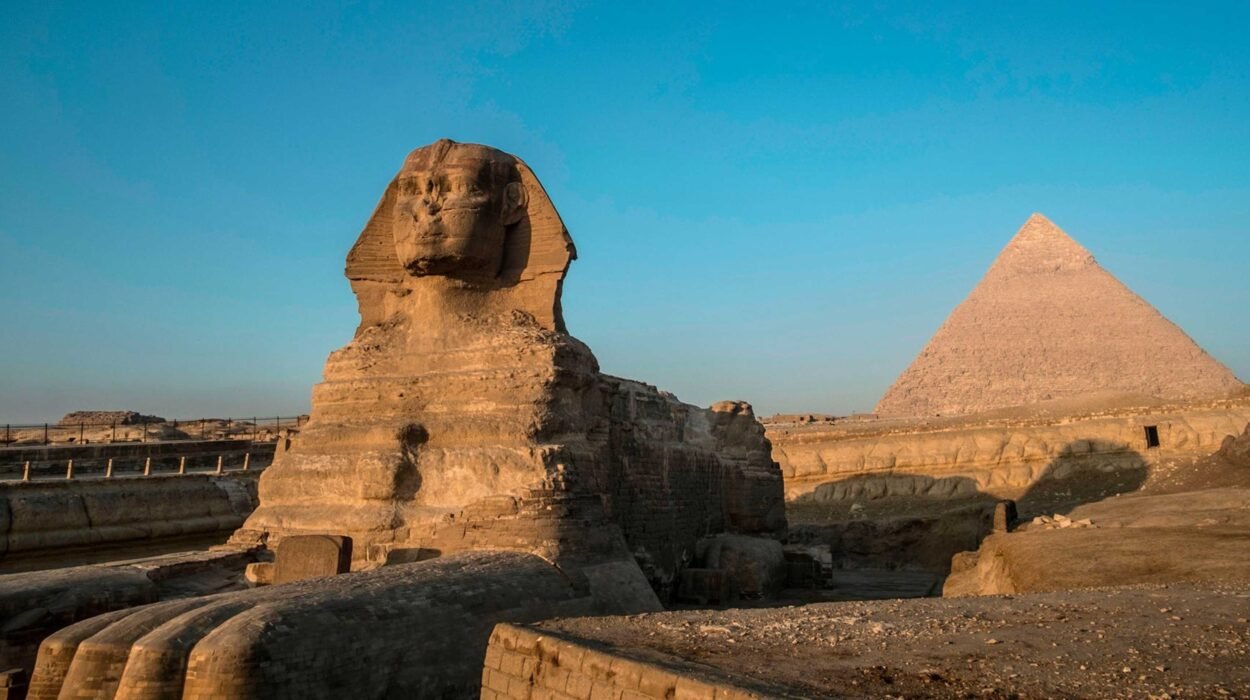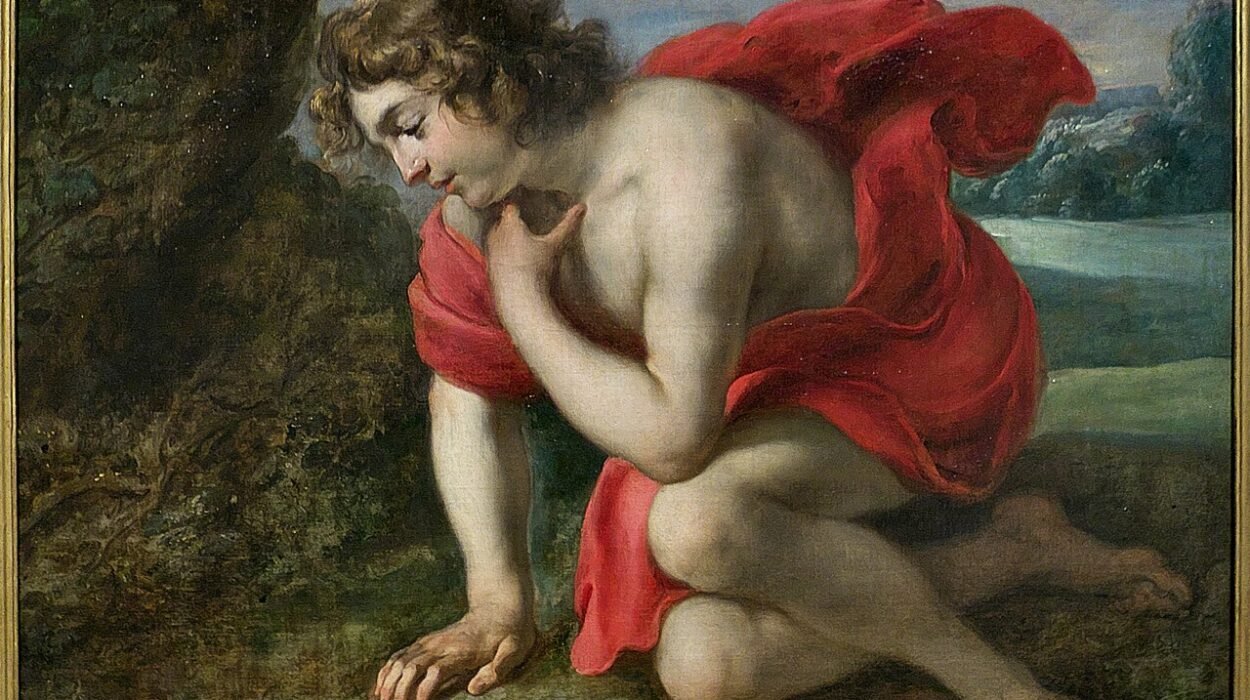Among the countless creatures born from the rich tapestry of Greek mythology, none is more iconic, fearsome, and mysterious than Cerberus, the monstrous hound of Hades. Standing at the threshold between life and death, this three-headed guardian has haunted the imagination of poets, storytellers, and artists for centuries. His snarling presence embodies the primal fear of the unknown beyond the grave, while his loyalty to his master, Hades, represents the inescapable boundary that divides the living from the dead.
Cerberus is not just a beast of terror. He is a symbol of transition, a sentinel stationed at the crossroads of existence, ensuring that the living do not trespass where they do not belong and that the dead do not escape their eternal fates. To understand Cerberus is to understand the Greek vision of mortality, the afterlife, and the divine order of the cosmos.
The Birth of a Monster
Cerberus was not born of ordinary creatures but of the most fearsome parents in Greek mythology. His father was Typhon, the monstrous giant described as the deadliest being of Greek myth, a creature of fire, storm, and chaos who once challenged the very throne of Zeus. His mother was Echidna, the half-serpent, half-woman known as the “Mother of Monsters.” From this union of chaos and terror came an entire brood of horrors: the Hydra, the Chimera, the Sphinx, Orthrus the two-headed dog, and among them, Cerberus, the watchdog of the underworld.
Unlike mortal dogs, Cerberus was not merely flesh and bone but a creature shaped by divine imagination and primordial fear. He was said to possess three ferocious heads, each capable of tearing apart intruders, though some sources describe him with as many as fifty or even one hundred heads. In addition, ancient writers describe him as having the tail of a serpent, a mane of writhing snakes, and claws sharper than steel. His very body was a reminder of his monstrous lineage, a being not meant for the world of light but for the eternal darkness below.
Guardian of the Gates of Hades
Cerberus’ role was singular and absolute: to guard the gates of the underworld. He stood at the entrance of the kingdom of Hades, where the souls of the dead passed after leaving the world of the living. His duty was twofold: he prevented the living from entering without divine permission and ensured that the dead did not leave their shadowy realm to disturb the world above.
The ancient Greeks believed that death was final and inescapable. Cerberus embodied that belief in living form. He was not a hunter, not a predator that roamed freely, but a guardian fixed to his eternal post. His snarls and snapping jaws were the audible warnings to all who approached the gates of Hades: life and death were separate, and the boundary between them was sacred.
In this sense, Cerberus was more than a monster. He was a cosmic enforcer, a living reminder of the natural order. To the Greeks, who viewed death with both fear and reverence, Cerberus was both terrifying and necessary.
The Symbolism of the Three Heads
Why three heads? Ancient mythology often imbued numbers with symbolic weight, and the three heads of Cerberus have inspired countless interpretations. Some saw them as representing the past, present, and future, a reminder that time itself is devoured by death. Others believed the heads symbolized the three stages of human existence—birth, life, and death—with Cerberus embodying the inevitability of the final stage.
Another interpretation connects Cerberus’ three heads to the three divisions of the underworld: the fields of Asphodel for ordinary souls, the Elysian Fields for the blessed, and Tartarus for the damned. Thus, the hound’s multiplicity reflected the complexity of the afterlife itself, where no single fate awaited all, but where all were nevertheless bound.
Whatever the interpretation, the three heads of Cerberus ensured his strength, his vigilance, and his symbolic power as a guardian unlike any other.
Encounters with Heroes
Though Cerberus was a terror to mortals and shades alike, there were those who dared to confront him. In Greek myth, encounters with Cerberus are rare, for few mortals ever ventured into the underworld and fewer still returned. Yet in those tales where he appears, Cerberus serves as both an obstacle and a measure of a hero’s courage.
Orpheus and the Power of Music
The poet Orpheus, famed for his divine voice and lyre, descended into the underworld in search of his beloved Eurydice. To pass Cerberus, Orpheus did not rely on weapons or brute force. Instead, he played his lyre, filling the air with melodies so hauntingly beautiful that the beast was lulled into a gentle slumber. For a brief moment, the snarling guardian of death became a docile listener, conquered not by violence but by art.
Heracles and the Final Labor
Perhaps the most famous encounter with Cerberus came when Heracles (Hercules in Roman myth) was tasked with capturing the beast as the twelfth and final labor. This challenge symbolized the hero’s ultimate confrontation with death itself. With the permission of Hades, Heracles faced Cerberus unarmed, armed only with his sheer strength. After a fierce struggle, he wrestled the hound into submission and dragged him into the world above, where his terrifying form struck fear into all who saw him. Eventually, Heracles returned Cerberus to the underworld, for the natural order could not be permanently overturned.
Aeneas and the Golden Bough
In Roman mythology, the hero Aeneas also encountered Cerberus during his descent into the underworld, guided by the Sibyl of Cumae. To pass the hound, the Sibyl fed him a honeycake laced with soporific herbs. Cerberus devoured the offering and sank into a deep sleep, allowing Aeneas to continue his journey to meet the shades of his ancestors.
Through these stories, Cerberus is shown not only as a beast of brute force but also as a creature bound by fate, capable of being subdued by music, strength, or cunning, yet always returning to his post, eternal and unyielding.
Cerberus in Art and Culture
Cerberus captured the imaginations of ancient artists as powerfully as he did the poets. Greek vases depict him with three snapping heads and serpent tails, often in the company of Heracles. Roman mosaics and frescoes portray him as both terrifying and majestic, a figure of dread and awe.
In literature, Cerberus was immortalized by poets such as Homer, Hesiod, Virgil, and later Dante Alighieri, who placed him in the Inferno as a gluttonous beast tormenting souls in the Third Circle of Hell. Over time, his image shifted from guardian to symbol of sin, his many mouths forever devouring.
In modern culture, Cerberus endures as a staple of fantasy, video games, films, and literature. He appears in works ranging from J.K. Rowling’s Harry Potter, where a three-headed dog named Fluffy guards a hidden passage, to countless role-playing games where Cerberus is reimagined as a fearsome boss or companion. Each adaptation reawakens the ancient myth, proving that the monstrous hound still prowls the corridors of our imagination.
The Psychological Dimension
Beyond myth and art, Cerberus also resonates on a deeper, psychological level. In the realm of symbolism, he represents the fear of death, the anxiety of crossing into the unknown, and the guardians that our minds place at the boundaries of consciousness.
Some scholars suggest that Cerberus embodies the liminal state—the threshold between one world and another. Just as he guards the gates of the underworld, he symbolizes the guardians of our inner thresholds: the barriers we erect between memory and forgetting, fear and courage, the known and the unknown. His three heads may even represent the many faces of fear, each snarling from a different direction but all leading to the same inevitable truth—that death is a boundary none may escape.
Cerberus as a Symbol of Order
While it is easy to see Cerberus as a monster, he was not evil. In Greek myth, he was not a malevolent force but a loyal servant of Hades, carrying out a vital duty in the balance of the cosmos. Without him, the dead might spill back into the living world, and the sanctity of death’s domain would be broken.
In this way, Cerberus embodies not chaos but order. He is the protector of boundaries, the enforcer of rules that even gods respected. His ferocity was terrifying, but it was in service of a necessary truth: that life and death must remain distinct.
The Enduring Legacy of the Hound
Cerberus endures because he embodies something timeless. He is more than myth—he is metaphor. He is the fear at the gates of death, the guardian of sacred boundaries, and the eternal reminder that some doors are not meant to be crossed.
From ancient Greece to the modern world, his image has shifted and evolved, but the essence remains: a three-headed hound standing sentinel where no living being belongs. He is both monster and guardian, terror and necessity, the ultimate boundary-keeper.
When we speak of Cerberus, we are not merely retelling an old myth. We are engaging with one of humanity’s oldest fears—the inevitability of death—and one of its oldest comforts—that there is order in the universe, even in the realm of shadows.
In the end, Cerberus is not only the hound of Hades. He is the eternal guardian of the human imagination, a creature who prowls the borderlands between life and death, myth and meaning, terror and truth.






